 |
|
|
HOME
|
US Navy -
ships
|
US Navy - air
units
|
USMC - air
units
|
International
Navies
|
Weapon Systems
|
Special Reports |
|
|
US Navy America class Amphibious Assault Ship - LHA |
|
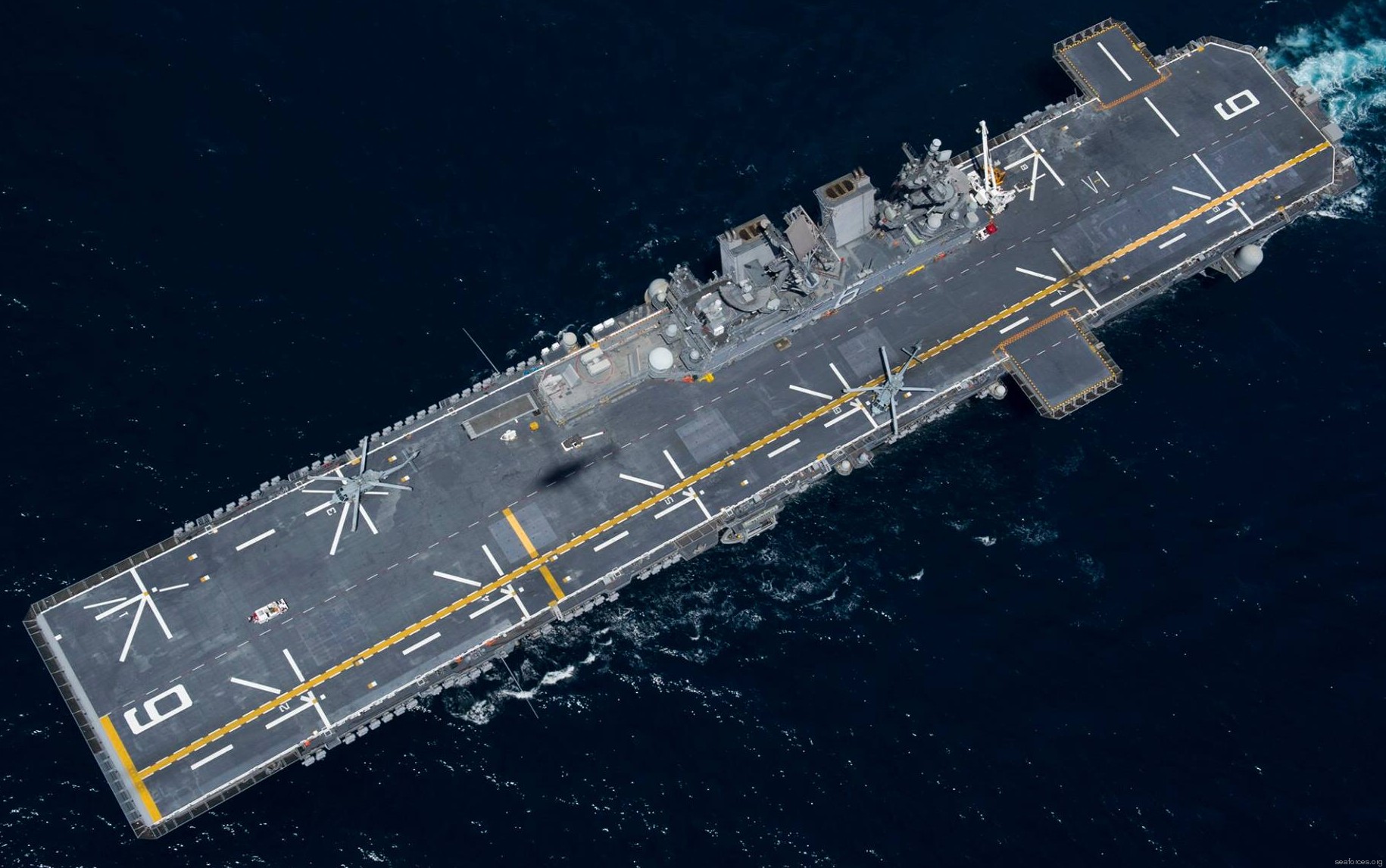 |
|
| 05/24 | |
| Ships: | |
|
Flight 0: LHA 6 USS America (2014) LHA 7 USS Tripoli (2020) Flight I: LHA 8 USS Bougainville (2024 ?) LHA 9 USS Fallujah (laid down 2022) LHA 10 USS Helmand Province (authorized) > up to 11 units planned |
|
| Specifications: | |
|
Displacement: 45690 tons (full load) Length: 257 meters (844 ft) Beam: 32 meters (106 ft) Draft: 7.9 meters (26 ft) Speed: 20+ knots (37+ km/h) Range: ? Complement: Ship's Company: 65 officers, 994 enlisted Embarked Landing Force: 1687 Marines Propulsion: 2 x gas turbines (70000 bhp / 52000 kW) 2 x auxilary propulsion engines (5000 hp / 3700 kW) 2 shafts, 2 propellers
Aviation: full flight deck with island / hangar deck Aircraft: AV-8B Harrier II / F-35B Lightning II / MV-22B Osprey / CH-53E Super Stallion UH-1Y Venom / AH-1Z Viper / MH-60S Knighthawk Landing force: Flight 0: no well deck / flight operations only Flight I: well deck for LCAC / LCU / AAV Systems: AN/SPS-48 electronically scanned array 3D air search radar AN/SPS-49 long range 2D air search radar AN/USG-2 Cooperative Engagement Capability (CEC) AN/SPQ-9B multi purpose surface search and fire control radar AN/SPN-43C air traffic control radar Ship Self-Defense System (SSDS) AN/SLQ-32B(V)2 electronic warfare suite 2 x Mk.53 NULKA decoy launching systems |
|
|
The America-class (formerly the LHA(R) class) is a ship class of
landing helicopter assault (LHA) type amphibious assault ships of
the United States Navy (USN). The class is designed to put ashore a
Marine Expeditionary Unit using helicopters and MV-22B Osprey V/STOL
transport aircraft, supported by AV-8B Harrier II or F-35 Lightning
II V/STOL aircraft and various attack helicopters. The first of
these warships was commissioned by the U.S. Navy in 2014 to replace
USS Peleliu of the Tarawa class; as many as eleven will be built.
The design of the America class is based on that of USS Makin
Island, the last ship of the Wasp class, but the "Flight 0" ships of
the America class will not have well decks, and they have smaller
on-board hospitals in order to give more space for aviation uses. Although they only carry helicopters and V/STOL aircraft, USS America, with a displacement of about 45,000 long tons (46,000 t), is similar in size to the French Charles de Gaulle and the Indian Vikramaditya fixed-wing aircraft carriers. Also, while more than 120 feet (37 m) shorter, they are of comparable displacement to the former US Navy Midway-class aircraft carriers. USS America can be used as a small aircraft carrier with a squadron of jet fighters plus several multipurpose helicopters, such as the MH-60 Seahawk. It can carry about 20 AV-8Bs, F-35Bs, or a mixture of the two, but the future ships of this class, starting with USS Bougainville (LHA-8), will have smaller aircraft hangars to leave room for larger amphibious warfare well decks. Design: America is based on the design of USS Makin Island, herself an improved version of the Wasp-class amphibious assault ships with gas turbine power. About 45 percent of the "Flight 0" design of this class is based on that of Makin Island, but with her well deck omitted to allow more room for aircraft, their spare parts and weapons, and their fuel. The gas turbines of Makin Island, America, and her possible successors use JP-5 fuel which is the same fuel used by their helicopters, the jet engines of their AV-8B Harrier and MV-22 Osprey fixed-wing aircraft and, in future ships, the gas turbines of the Landing Craft Air Cushions (LCACs) that they could carry in their well decks. This commonality greatly simplifies the storage, distribution, and use of the fuels. The typical aircraft complement for the first two vessels is expected to be 12 MV-22B Osprey transports, six F-35B Lightning II STOVL multirole jet aircraft, four CH-53K heavy transport helicopters, seven AH-1Z/UH-1Y attack/utility helicopters, and two Navy MH-60S "Knighthawks" for air-sea rescue. The exact make-up of the ship's aircraft complements will vary according to her mission. She can carry about 20 AV-8Bs or F-35Bs, and two MH-60Ses to serve as a small aircraft carrier as demonstrated by Landing Helicopter Dock (LHD) operations in Operation Iraqi Freedom. The U.S. Marine Corps is now more concerned about anti-ship missile attacks from fast attack craft and long-range precision fires from land. To counter such attacks the Commandant of the Marine Corps, General David H. Berger wants to keep amphibious ships farther offshore. For this Marines would be sent ashore in long-ranged MV-22 V/STOL aircraft. The MV-22 is significantly larger than the largest helicopters used by the U.S. Marine Corps and the U.S. Navy in the past. To accommodate these requirements, America has twice the displacement of the retired Iwo Jima-class amphibious assault ships. The America-class amphibious assault ships are engineered with a hybrid-electric propulsion system derived from the one used on Makin Island. The ships can use gas-turbines for high speeds and the diesel-electric engines when operating in situations that require lower speeds like close to shore. Setting the beam of America at 106 feet (32 m) was dictated by the need for these ships to pass through the Panama Canal. The Congressional Budget Office found that if before 2040 the price of oil reached and remained above $140 per barrel then the use of nuclear propulsion for LH(X)-class ships would be more cost-effective. A modified version of the design of America, designated the MPF(F), LHA(R), or T-LHA(R), was proposed for two ships of the Maritime Prepositioning Force (Future). The MPF(F) is the Navy's concept for a "sea base" to support operations ashore starting in about 2025. These two ships would hypothetically be manned by a civilian crew from the Military Sealift Command and not armed with weapons. Funding for the MPF(F) and the LHA(R) was tabled by the Senate Armed Services Committee in the fiscal year 2008 budget. The U.S. Navy now intends to buy more ships of the America class for its fleet of amphibious warfare ships. The so-called "LHX" was a warship that was proposed in the late 1990s to replace the Tarawa-class amphibious assault ships, but with a dry deck for hovercraft rather than a floodable "well deck". After 2000, the LHX, the so-called "Amphibious Assault Ship Future Replacement", was put forward to replace all of the LHDs. The new LHX could be a Flight 2 design of the America class built with a well deck and a smaller island superstructure, which would give it 20 percent more capacity on the flight deck. This would remove the current restriction on MV-22s to land on spots 5 and 6, and also giving room for four MV-22B, three F-35B Lightning IIs, or three CH-53Ks to use the flight deck. In 2008, the procurement of Flight 2 ships was tentatively planned for 2024, but that might not be practical or affordable by then. In January 2014, the U.S. Navy began taking measures on America in order to reduce damage from excessive heat given off by the F-35B and MV-22 to prolong the life of the flight deck. The F-35B engine gives off much more heat than the previous AV-8B Harrier STOVL fighter and the MV-22 Osprey's heat exhaust has been known to damage flight decks. Plans include 14 different modifications to the ship and limiting the number of flight operations that are conducted off the deck. The U.S. Navy is looking for cost-effective solutions that will not affect the combat effectiveness of America. Restricting the number of flight operations is not expected to decrease its usefulness as amphibious assault ships are made to support quick assaults, while full-sized aircraft carriers have the mission of conducting sustained air operations. Lessons learned from these measures will be applied to Tripoli and Bougainville under construction, which will allow them to perform "complete unrestricted operations." Minor modifications to America are as small as putting covers over life rafts and refueling stations and moving antennas. Well deck: Further warships in this class will have a well deck for amphibious warfare in their sterns to contain landing craft, such as the Landing Craft Air Cushion (LCAC), as in Tarawa-class LHAs and Wasp-class amphibious assault ships. The addition of a well deck will leave less space for aircraft on board the ships, but the "Early Operational Assessment" of 2005 criticized the "Flight 0" design because the expanded aviation facilities gave no space for a well deck. Also, USS America has reduced stowage space for military vehicles, and the size of her hospital was reduced by two-thirds with respect to the Wasp-class ships. Before he became the Under Secretary of the Navy, Robert O. Work also brought into question the usefulness of an amphibious warfare ship without a well deck. The concept of the Landing Platform Helicopter (LPH) had failed when their helicopters met enemy anti-aircraft systems off the coast of Lebanon during the late 1970s. In that case, Marines first had to be moved onto ships that had well decks. The third ship of the class (USS Bougainville (LHA-8)) will be the first in its class with a well deck for deploying amphibious vehicles. While there was emphasis on lighter ground vehicles in the late 1990s, up-armored and heavier vehicles were used during operations in Iraq and Afghanistan. Future counterinsurgency operations require ships that can carry and deliver those vehicles, including through use of shore connectors; cargo lift requirements are met more expensively by aircraft airlifting equipment. Adding the well deck will require the ship's island to be slightly smaller compared to its two predecessors. Early design work with funds will begin in 2015, detailed design work and construction will start in 2017, and the LHA-8 will enter service in 2024. source: wikipedia |
|
|
class + detail images (for more images go to the individual ship pages) |
|
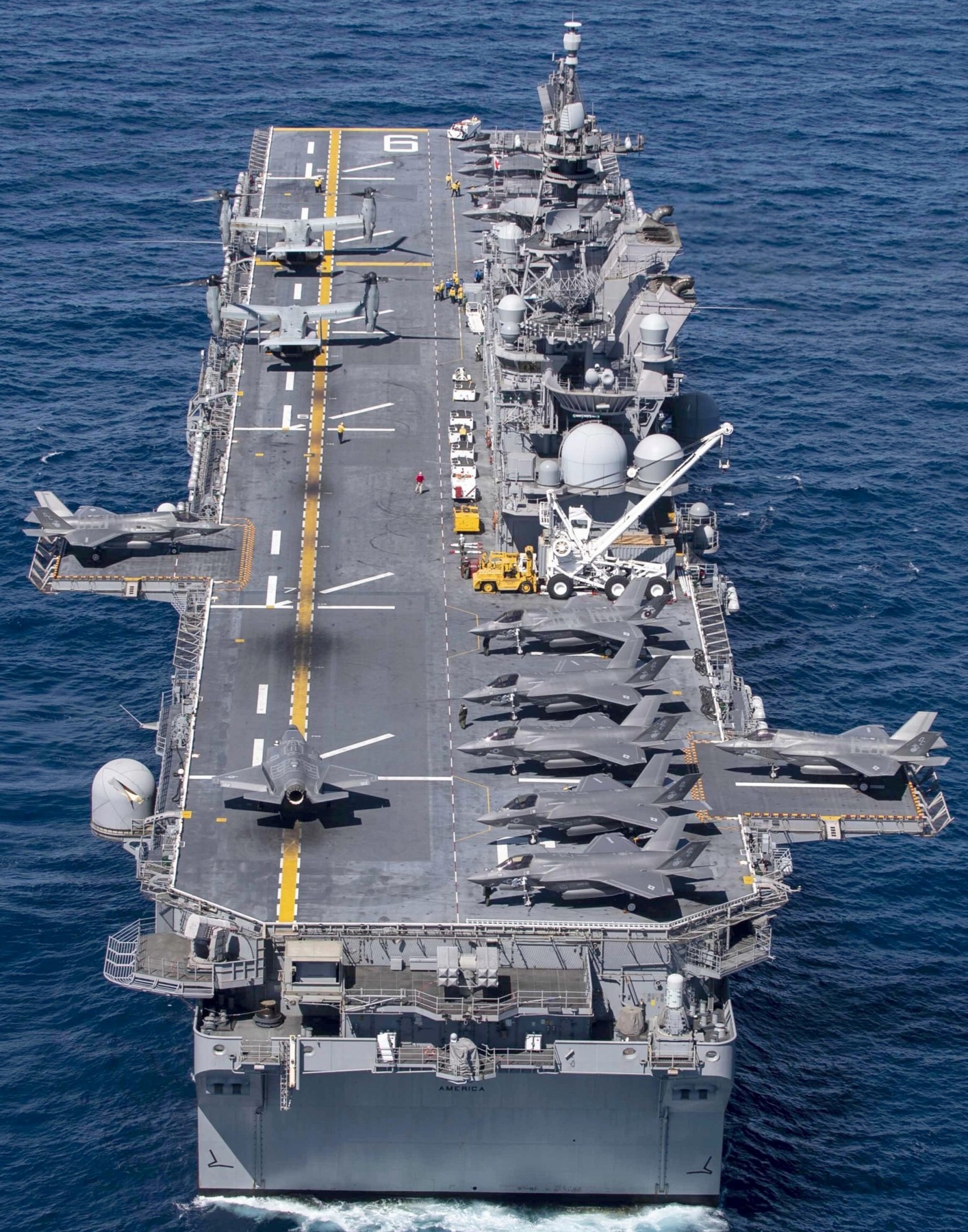 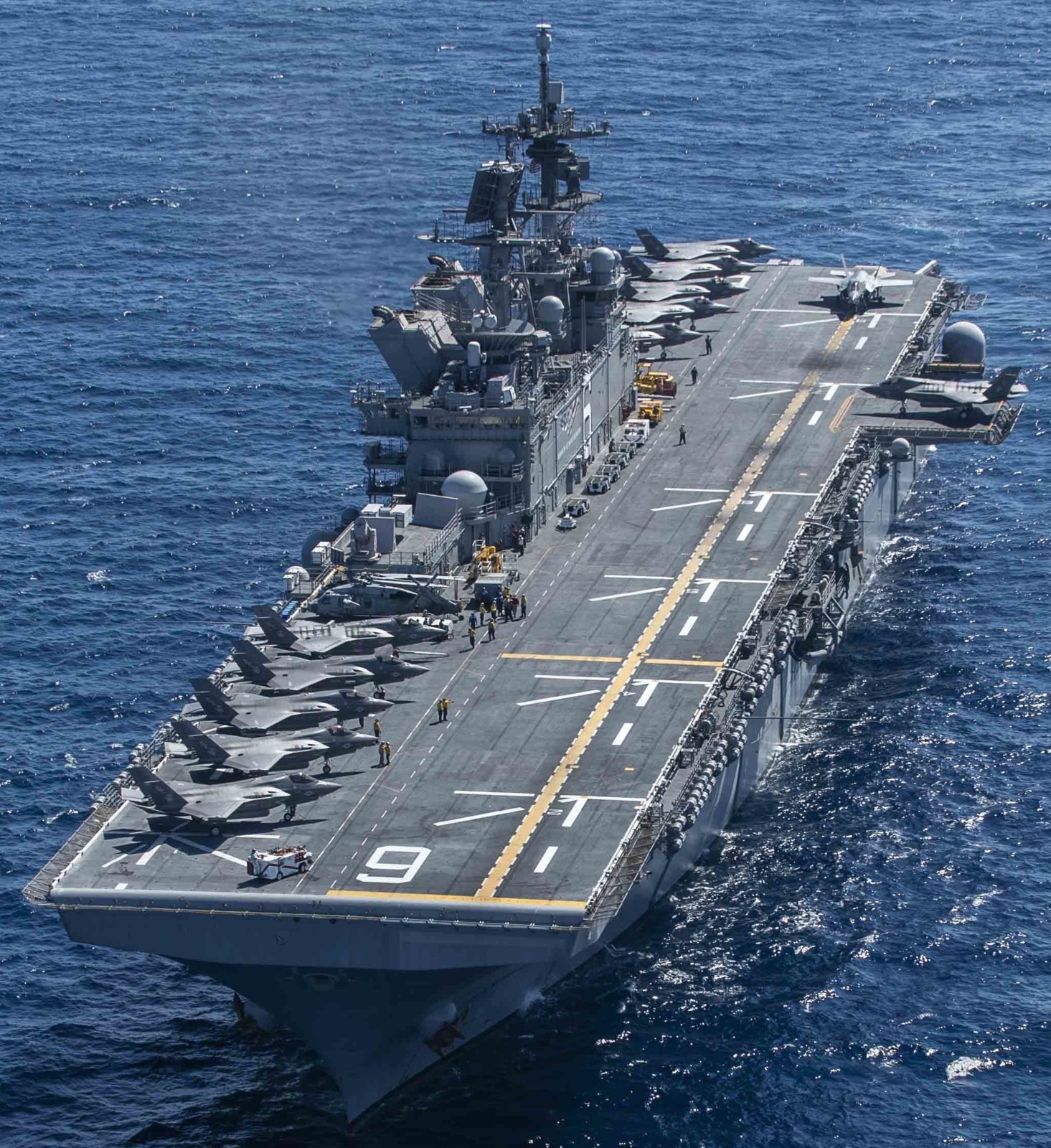 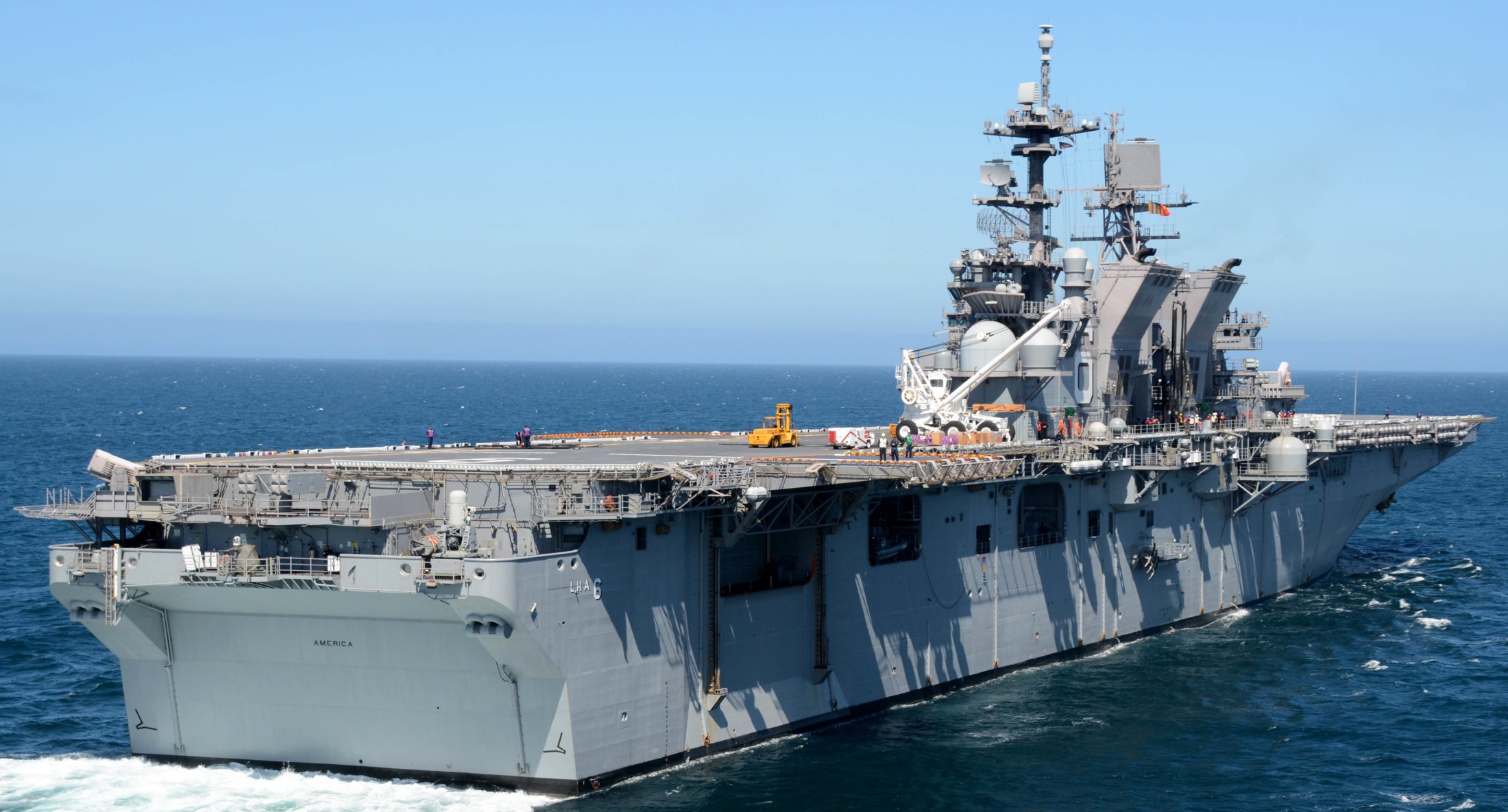 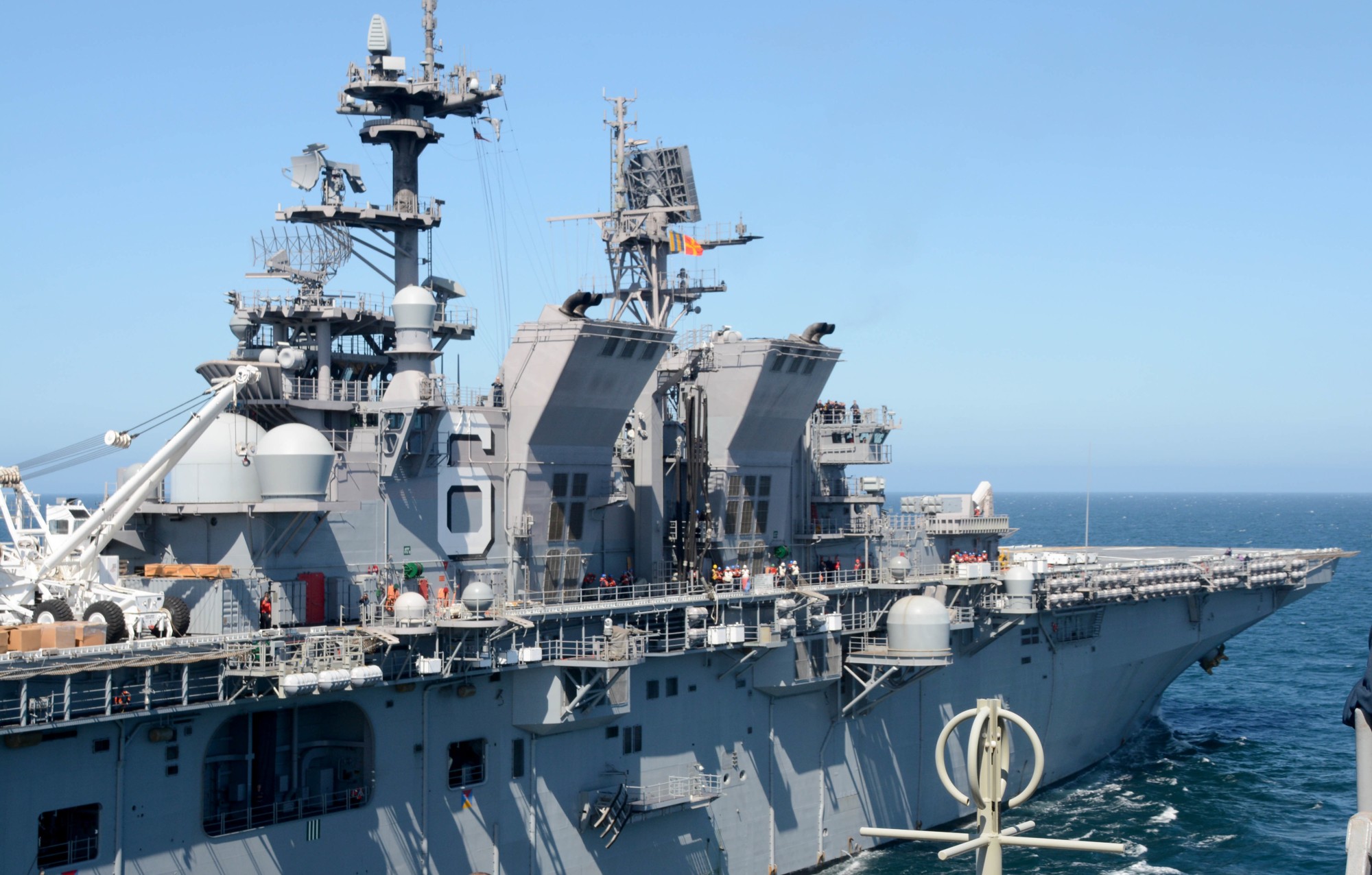 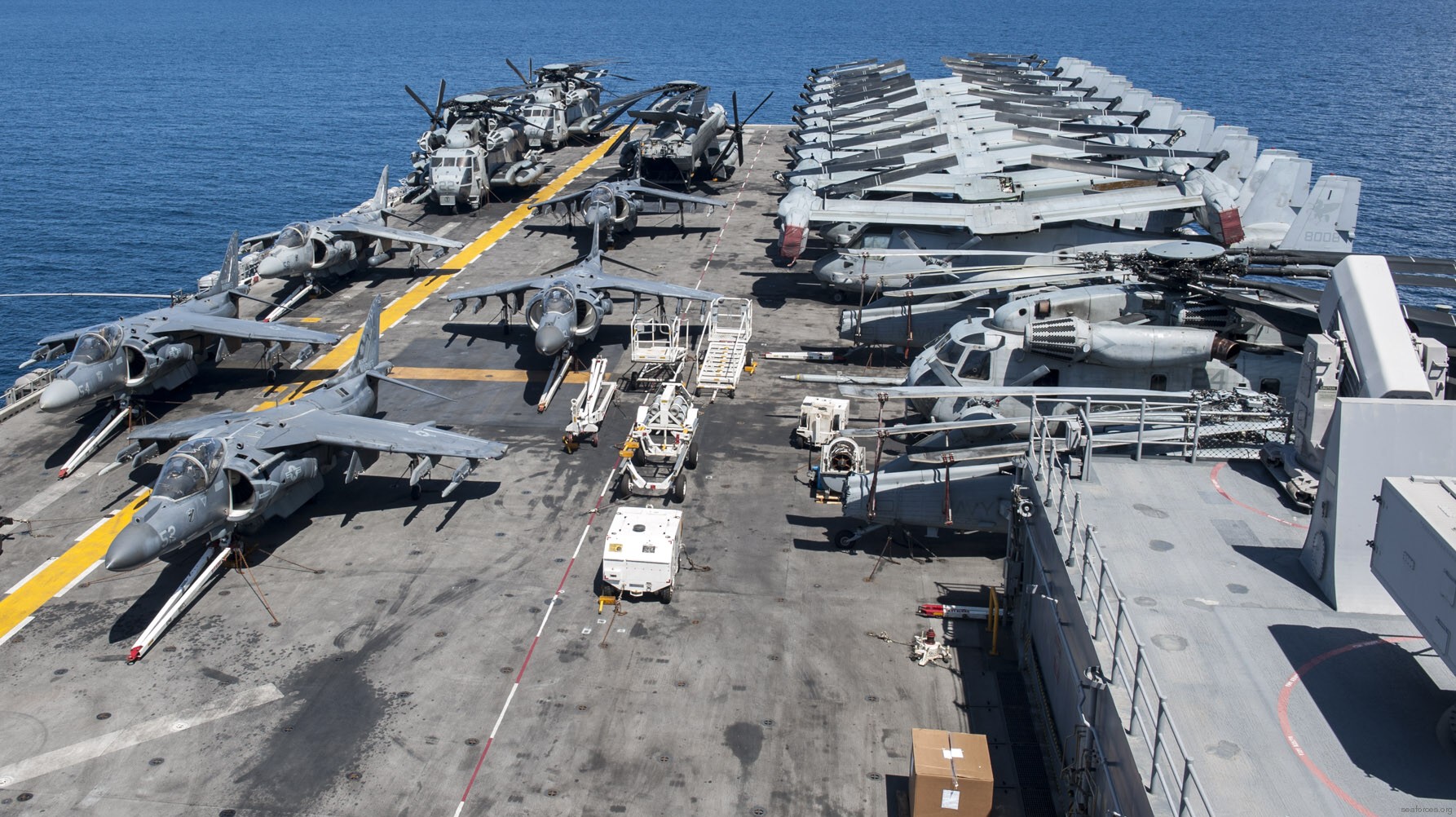 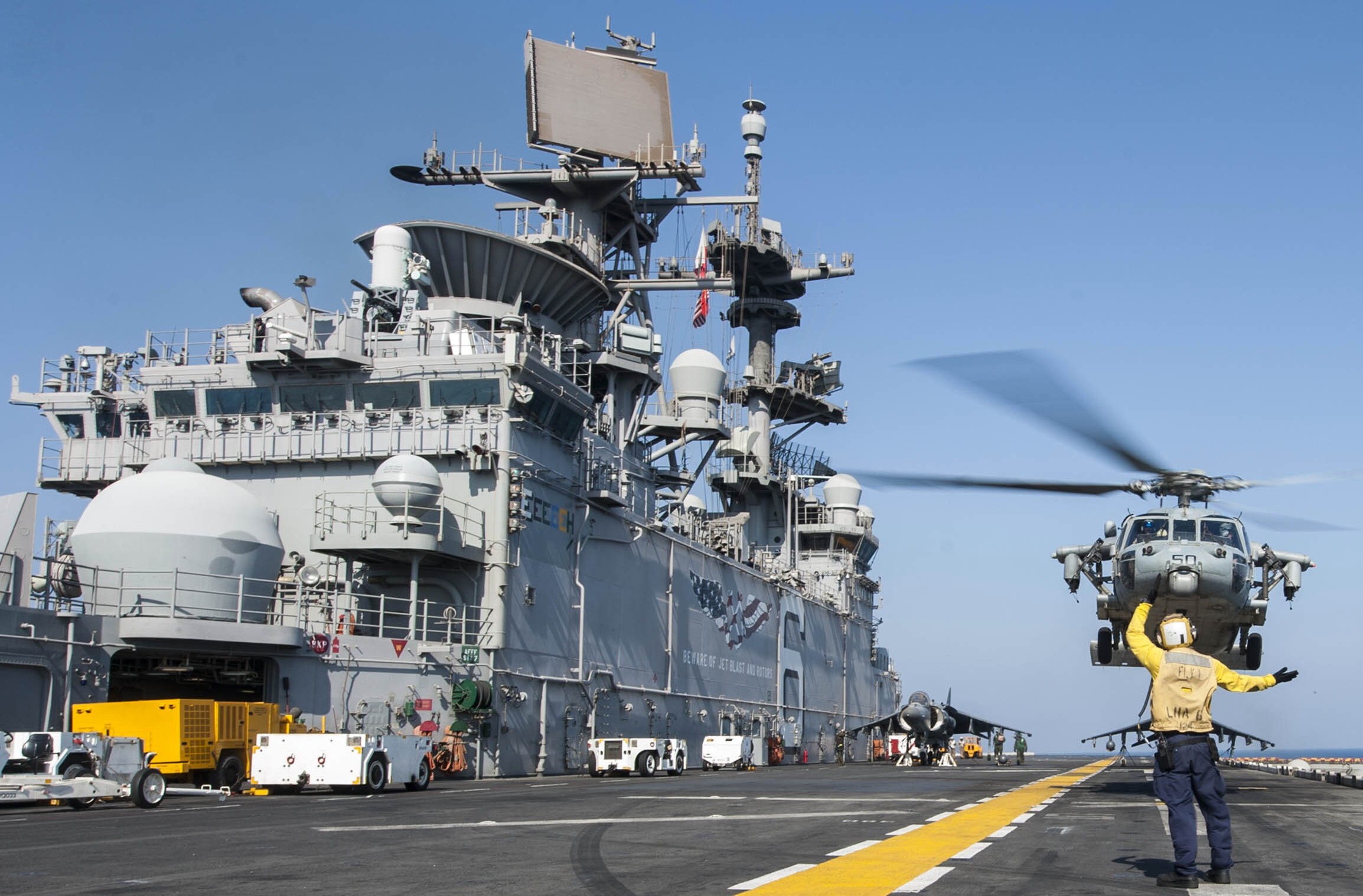 |
|
|
|
seaforces.org
|
USN ships
start page | |